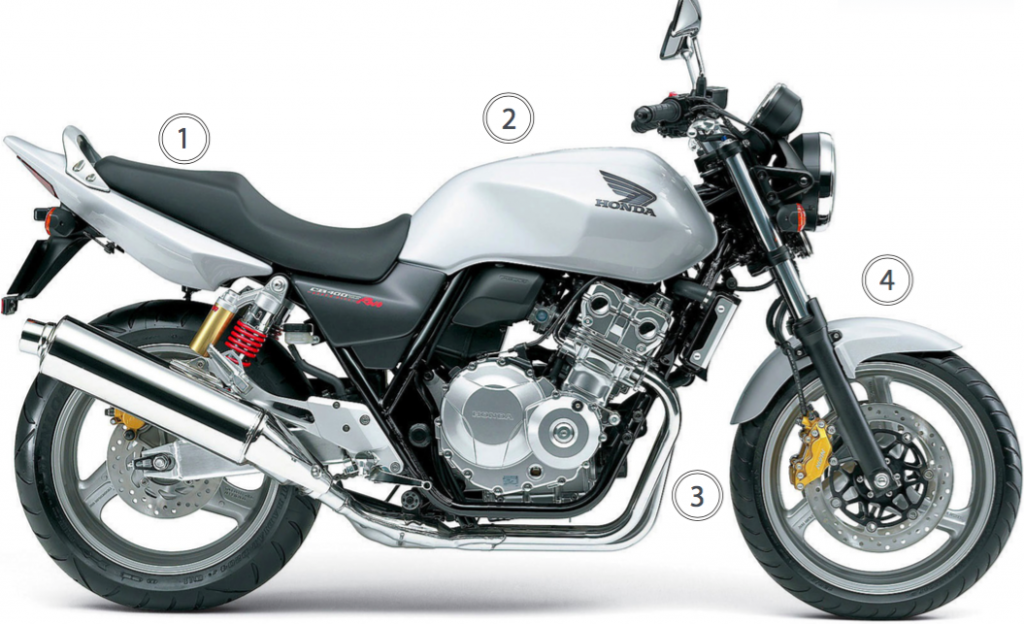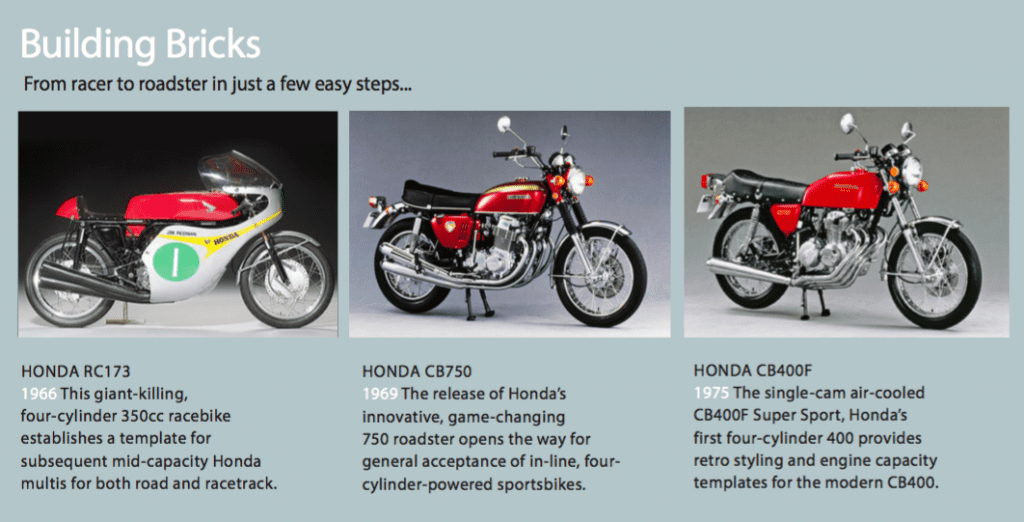Some interesting bikes arrived in Australian dealer showrooms for the first time when our licensing authorities dropped the old 250cc limit for learners and novices in favour of LAMS-category machines. Honda’s hi-tech middleweight, the Honda CB400, is a perfect example.
Since 1992 it has been a top seller in the Japanese domestic market as the CB400 “Super Four” and has been progressively up-specced, gaining the VTEK variable-valve set-up in 1999 and then electronic fuel injection in 2008, the year it was introduced here.
Its classic retro-naked looks, featuring a twin-loop steel-tube chassis with twin-shock rear suspension are a tribute to the UJM (universal Japanese motorcycle) era of the 1970s. As the term implies, UJM-bikes were versatile and rider-friendly roadsters that were capable of performing well as commuters or tourers. Many of them also did quite well as weekend scratchers. And they made pillion passengers happy to boot. The thoroughly modern CB400 ticks all those boxes.
The engine is a showcase for Honda’s traditional fondness for mechanically complex four-strokes. Honda established its reputation for technical excellence in the mid-60s with its pioneering high-revving, multi-cylinder, four-stroke road racers. While the CB400 is no racebike, its little jewel of an engine that spins up happily beyond 12,000rpm pays its respects to that heritage.
Behind the bar you sit in a touring posture on a comfortable seat set at an accessible 770mm. Its tapered front section helps shorties get their boots to the ground. Despite the CB400’s compactness and lightness (170kg dry) that make it unintimidating for smaller folk, it also accommodates larger riders well and feels like it has a bit of substance to it on the road.
All controls are easy to operate. Clutch action is smooth and the six-speeder’s gearshift action is accurate and easy, if a touch notchy. Throttle response is strong and crisp and linear, with excellent fuelling in all settings. Brakes are progressive and powerful.
The engine has quite strong bottom- to midrange torque for a 400, pulling cleanly from 2500rpm and really coming alive as the revs rise. Thanks to the VTEK set-up it’s a bi-modal engine that feels just as sweet breathing calmly through eight valves under 7000rpm as when it’s howling through all 16 in the high-rpm zone. VTEK, which seems a bit superfluous on its big brother, the VFR800, works a treat on the CB400 – perhaps because an 800cc donk doesn’t actually need help to produce strong torque at low revs.
The CB400 is a satisfying ride, with decent, taut suspension that copes well with bumps. The handling is light and agile, providing a nice compromise between the stability of a touring bike and the sharpness of a sportsbike. It’s as comfortable in the cut and thrust of urban traffic as it is doing the business through the twisties in the hills. The18-litre tank provides a safe touring range of over 320km.
While its Showa suspension is fairly basic and only pre-load adjustable, and the engine’s max power of 39kW (52hp) is unremarkable, the degree of refinement the bike demonstrates when put through its paces is immediately obvious.
While the CB400 has been discontinued, Honda still offers new ABS-equipped CB400A models. The partially linked ABS set-up on the CB400A is excellent, providing an extra margin of safety in slippery conditions.
The sophistication of the four-cylinder CB400 contrasts with the more basic nature of cheaper LAMS bikes, including Honda’s own low price-point CB500 and CBR500 twins. It’s in a different class altogether – for which you pay a price premium. What you get is a little thoroughbred that’s great for novices while giving experienced riders who favour a classy middleweight a perfect outlet for their talents.

PRICE GUIDE
New Price
$9990 (2008) $10,099 (2014)
Second-Hand
$5000 – $8800
WHAT TO LOOK FOR
These little gems are pretty much bullet-proof given decent maintenance, so you’re checking for damage or signs of neglect.
As always with Hondas check for rectifier/regulator issues.
Grey import examples should come at a decent discount to compensate for any parts availability or servicing issues.
Adjust your offer to cover worn consumables like chain, sprockets, steering-head bearings and brake pads, also brake rotors close to minimum thickness.
The ideal prospect is a low k’s example with a full service record.

SERVICE HISTORY
The CB400 is a reliable machine that’s straightforward enough for DIY-owners to carry out basic maintenance. Access is good for routine servicing like oil and filter changes at 12,000km intervals. However, be aware that valve-clearance checking and correcting – required at 24,000km intervals – is a complex job due to the VTEK set-up, adding to the cost of ownership. For experienced DIY-owners with the right equipment and skills it’s still a complex job.











